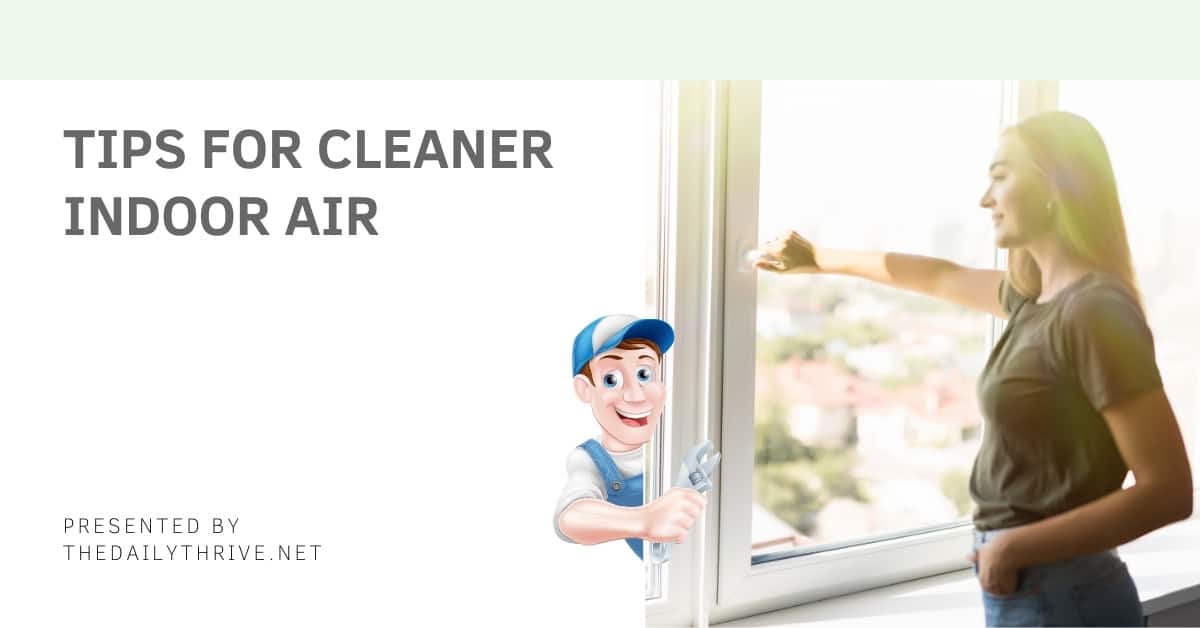When most people think of air pollution, they picture highways full of car exhaust and factories belching smoke, but did you know that the air inside your home can actually be more dangerous? The Environmental Protection Agency estimates that indoor air pollution levels can range from two to five times as high as outdoor levels and warns that indoor pollutants can be responsible for a number of health issues, including asthma, allergies, dizziness, and nausea. Follow the tips below to help keep the air in your home clean.
Indoor Air Quality Test
The first step toward controlling indoor air pollution is to test the air quality in your home. Air Quality Test Kits are available that will allow you to test for the most common and dangerous air pollutants like dust, mold, bacteria, allergens, soot, and asbestos. Identifying the problems in your home will help you prepare a plan to improve indoor air quality.
Filter
Depending on where you live, you will likely spend some part of the year controlling the air in your home with an air conditioner or furnace. To help keep pollutants out of the air, install a high-quality filter that will not only remove dust, pet hair, and allergens but also mold spores and hazardous gases. Be sure to change your filter regularly – high-use systems require new filters as often as once a month.
You can also purchase indoor air purifiers that HEPA and carbon filters to remove everything from allergens to noxious gases. These are a great option if someone in your home suffers from severe allergies or asthma.
Clean Green
Many common cleaning products, including solvents and bleach, release toxins known as volatile organic compounds (VOCs). These airborne chemicals dissipate quickly in outdoor environments but can reach high concentrations inside your home. They have been linked to a wide range of health problems, from dizziness to asthma to cancer.
Avoid VOCs by cleaning with eco-friendly cleaning products like plant-based soy and citrus cleansers, oxygen bleaches, and phosphate-free laundry soap.
Keep Chemicals Outside
Paints and paint thinner are other common household items that release VOCs, so store them in well-ventilated areas away from your homes, such as a garage or storage shed. You should also keep garden chemicals like pesticides and fertilizers outside your house.
When using any of these chemicals indoors, make sure your home is properly ventilated by opening the windows and using fans to prevent the build-up of fumes.
Control Mold
Mold spores are known to cause a range of respiratory problems, including coughing and congestion, and can exacerbate pre-existing asthma. They are especially dangerous to those with compromised immune systems, which are susceptible to more serious respiratory infections.
Mold grows in warm, humid areas, including around leaky doors or windows, under the carpet, behind refrigerators or air conditioners, and under sinks. It is also a frequent problem in flooded areas.
In order to prevent mold from growing in your home, use a dehumidifier to keep the air dry and fix any leaking windows or pipes that may be creating damp spots. If you find mold, it can be cleaned with soap and water or a non-toxic enzyme cleaner, but be sure to wear a mask while cleaning to prevent inhalation of spores. Replace any porous materials like wood or fabric that have molded.
Ventilate
On nice days, keep the windows open and the fans on in order to bring fresh air into your home, but be sure to check local allergy forecasts if someone in your family has seasonal allergies.
Clean the Carpets
Carpets are great for insulating and decorating your home, but they also trap all sorts of common allergens, including pet dander, mold spores, and pollen. This collection of allergens is stirred up whenever you walk across your carpet and can be especially dangerous for crawling children. So clean your carpet often with a vacuum designed to trap allergens (regular vacuums won’t pick up smaller particles) and steam clean regularly. You can also use green carpet shampoo.
Other fabrics in your home also trap allergens, so also be sure to regularly clean couches and wall hangings as well as sheets and blankets.
Best Indoor Plants For Air Quality
Plants can process more than just carbon dioxide – a 1989 NASA study showed that indoor plants also have the ability to clean VOCs like trichloroethylene, benzene, and formaldehyde out of the air. So keep your home green, literally, by keeping indoor plants. The NASA study recommended 15 plants for cleaning indoor air:
- Philodendron scandens `oxycardium,’ heartleaf philodendron
- Philodendron domesticum, elephant ear philodendron
- Dracaena fragrans `Massangeana’, cornstalk dracaena
- Hedera helix, English ivy
- Chlorophytum comosum, spider plant
- Dracaena deremensis `Janet Craig’, Janet Craig dracaena
- Dracaena deremensis `Warneckii,’ Warneck dracaena
- Ficus benjamina, weeping fig
- Epipiremnum aureum, golden pothos
- Spathiphyllum `Mauna Loa,’ peace lily
- Philodendron selloum, selloum philodendron
- Aglaonema modestum, Chinese evergreen
- Chamaedorea sefritzii, bamboo or reed palm
- Sansevieria trifasciata, snake plant
- Dracaena marginata , red-edged dracaena
Keep Your Pets Clean
Pets can feel like a part of your family, but they are also a common source of allergens – around 30% of people with allergies will react to pet hair and dander, both of which can remain in the air and carpets for long periods of time. To help keep your home free of pet allergens, bathe your pets regularly with non-toxic pet shampoo and brush them outside.

